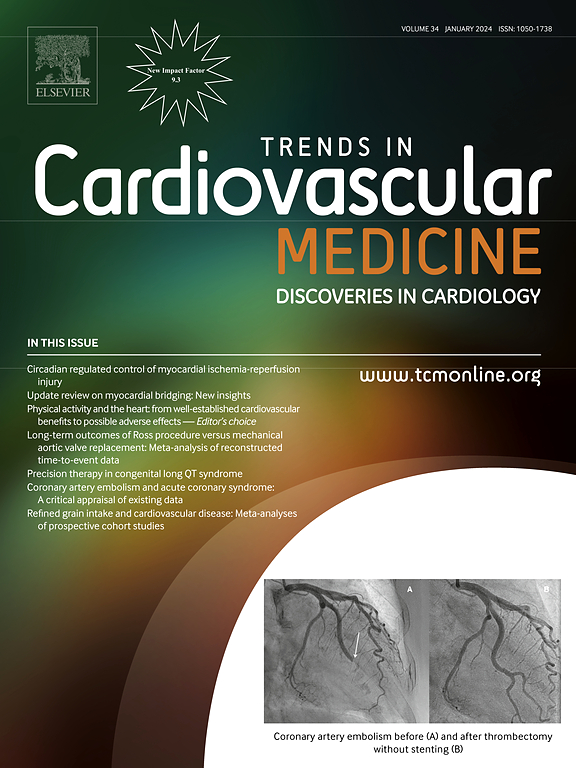Effects of different exercise methods and intensities on the incidence and prognosis of atrial fibrillation
IF 7.3
2区 医学
Q1 CARDIAC & CARDIOVASCULAR SYSTEMS
引用次数: 0
Abstract
Atrial fibrillation (AF), the most common sustained arrhythmia in clinical practice, exhibits a higher risk of cardiovascular adverse events. Exercise plays a crucial role in AF prevention, but the effects of different exercise types and doses are inconclusive. This review aims to comprehensively explore the most recent evidence and possible mechanisms of diverse exercise modalities concerning AF incidence and therapeutic outcomes. Multiple studies underscore the efficacy of moderate-intensity continuous training (MICT) in reducing AF incidence and symptom burden, rendering it the currently favored exercise therapy for AF patients. High-intensity interval training (HIIT) shows promise, potentially surpassing MICT, especially in reducing age-related AF susceptibility and improving symptoms and exercise capacity. Conversely, prolonged high-intensity endurance exercise exacerbates AF risk due to excessive exercise volume, with potential mechanisms encompassing irreversible atrial remodeling, heightened inflammation, and increased vagal tone. In summation, MICT is a secure strategy for populations in mitigating the risk associated with AF incidence and secondary cardiovascular events and should be encouraged. Also, it is recommended to initiate large-scale clinical intervention trials encompassing a variety of exercise types to delineate the optimal exercise prescription for cardiovascular patients, including those afflicted with AF.
不同运动方法和强度对心房颤动发病率和预后的影响。
心房颤动(房颤)是临床上最常见的持续性心律失常,发生心血管不良事件的风险较高。运动在房颤预防中起着至关重要的作用,但不同运动类型和剂量的效果尚无定论。本综述旨在全面探讨有关房颤发病率和治疗效果的各种运动方式的最新证据和可能机制。多项研究强调了中等强度持续训练(MICT)在降低房颤发病率和症状负担方面的功效,使其成为目前房颤患者最青睐的运动疗法。高强度间歇训练(HIIT)在降低与年龄相关的心房颤动易感性、改善症状和运动能力方面的效果尤为显著,有可能超过中等强度持续训练。相反,长期高强度耐力运动会因运动量过大而加剧房颤风险,其潜在机制包括不可逆的心房重塑、炎症加剧和迷走神经张力增强。总之,MICT 是降低房颤发病率和继发性心血管事件相关风险的安全策略,应予以鼓励。此外,还建议启动大规模的临床干预试验,包括各种类型的运动,以确定心血管疾病患者(包括房颤患者)的最佳运动处方。
本文章由计算机程序翻译,如有差异,请以英文原文为准。
求助全文
约1分钟内获得全文
求助全文
来源期刊

Trends in Cardiovascular Medicine
医学-心血管系统
CiteScore
18.70
自引率
2.20%
发文量
143
审稿时长
21 days
期刊介绍:
Trends in Cardiovascular Medicine delivers comprehensive, state-of-the-art reviews of scientific advancements in cardiovascular medicine, penned and scrutinized by internationally renowned experts. The articles provide authoritative insights into various topics, encompassing basic mechanisms, diagnosis, treatment, and prognosis of heart and blood vessel disorders, catering to clinicians and basic scientists alike. The journal covers a wide spectrum of cardiology, offering profound insights into aspects ranging from arrhythmias to vasculopathies.
 求助内容:
求助内容: 应助结果提醒方式:
应助结果提醒方式:


